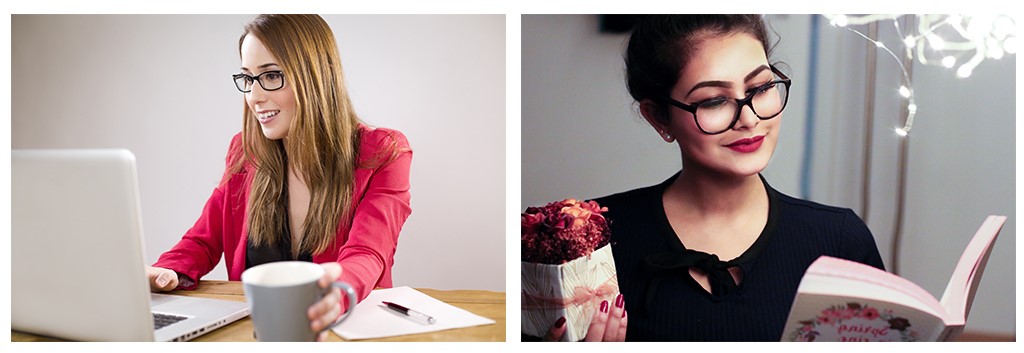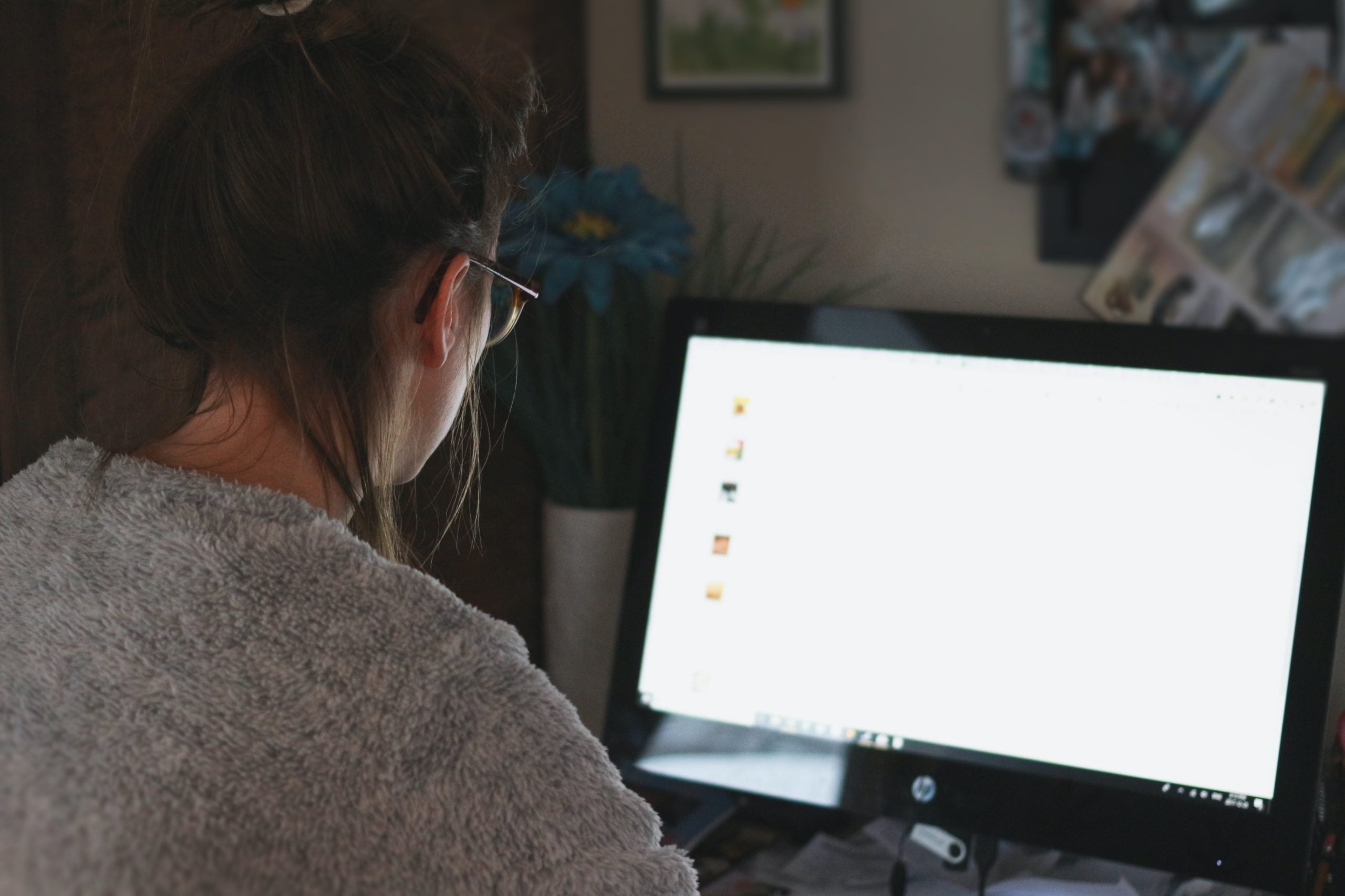Light sensitivity is most often thought of in terms of adults. But the fact is, childhood and even toddler light sensitivity are very real. If you have a child who deals with this, you understand how debilitating it can be for kids.
In this article, we’ll talk about what conditions, mental and physical, may be associated with light sensitivity, what the symptoms could look like, and how you might help your child cope.
Light Sensitivity in Kids is Serious Business
Light-sensitive adults usually find their condition interferes with work, socializing, and daily function. In kids, light sensitivity can make play, education, and daily living just as difficult. In fact, parenting or living with a child with light sensitivity can take a toll on the entire family.
At Axon Optics, we frequently hear from parents that our eyewear with Avulux® light sensitivity lenses help their kids manage how light impacts them. Just one of those stories was submitted by the mom of a 5-year-old on the autism spectrum. We’ll call her Ann. She writes:
“I have bought
“Ann” — mom of 5-year-old with Autism Spectrum Disorderseveral pairs of glasses, expensive and non-expensive ones, in my desperation to help him ease his pain, which was already affecting his daily activities. I was thrilled to find your glasses online.”
Making Ann’s little boy’s condition even more complex is the fact that he also suffers from ADHD, which is known to be related to light sensitivity. In this case, that sensitivity is enhanced by the medication used to manage his ADHD. This results in discomfort when he encounters bright light, sunshine, and even some colors.
In the end, Ann’s son found the relief they were looking for with our light sensitivity glasses.
Mental Conditions Related Childhood or Toddler Light Sensitivity
The situation mentioned above isn’t uncommon in kids with light sensitivity. There are several conditions related to photophobia in kids that may make it more difficult to manage. These include Autism, Sensory Processing Disorder (SPD), Attention Deficit Hyperactivity Disorder (ADHD), and Obsessive-Compulsive Disorder (OCD). Let’s discuss these in more detail.
Autism
Autism (Autism Spectrum Disorder or ASD) is a classification for a range of conditions associated with social skills, behaviors, and development. It’s estimated that 1 in 59 kids in the United States is on the Autism Spectrum. Autism is known to be related to sensory issues such as hypersensitivity to many different stimuli, including:
- Light
- Sound
- Smell
- Touch
- Taste
The hypersensitivity to light may be related to certain wavelengths, such as those emitted by fluorescent lighting. For a child or toddler with light sensitivity who doesn’t understand where their pain is coming from, you can imagine the trauma it can cause. Places typically lit by fluorescent lights, including stores and public buildings can be particularly difficult.
For kids who have both ASD and light sensitivity, determining the true cause of their response to the environment they’re in can be tough. Their response could be caused by the light exposure, general overstimulation, or both.
Sensory Processing Disorder
SPD has been shown to affect school-aged kids at a rate of 5% to 16%. Children with SPD often experience hypersensitivity related to the senses, including extreme sensitivity to light.
SPD commonly occurs along with disorders like ADHD or ASD. In similar fashion to ASD and toddler light sensitivity, SPD can complicate the process of diagnosing the root of the issue. On top of the fact that a toddler can’t often vocalize exactly what’s bothering them, symptoms and reactions may overlap.

OCD
Obsessive-compulsive disorder is classified as an anxiety disorder that causes a person to compulsively, involuntarily repeat behaviors or obsess over things. Approximately 1 in 200 children are affected by OCD, who experience the disorder differently than adults do. In kids, common obsessions may include sickness or death, hurting others or themselves, persistent need for reassurance, or constant organizing.
OCD may co-occur with light sensitivity, adding up to a major impact on daily function. Again, kids and toddlers — especially those who already suffer from anxiety disorders such as OCD — might be unable to identify or describe their symptoms, or the fact that light is causing them pain.
ADHD
ADHD affects brain development, attention span, and impulse control. It affects 9.4% of children in the United States. Like Autism and SPD, kids with ADHD may also have light sensitivity and other sensory issues that bring discomfort and trouble with day-to-day function and behavior.
The high prevalence of light sensitivity with ADHD may have to do with how dopamine and melatonin are processed. More study is needed to determine the precise nature of the relationship, but one thing is certain: it plays a role in how ADHD can impact a child’s function at school and play.
Ann was able to help her son (with ASD, ADHD, and light sensitivity) manage light through Axon Optics.
“I read and read articles about them and decided to give them a shot. The glasses arrived very fast, within 3 days. My son was jumping up and down when they were delivered. He put them on and was able to watch cartoons for a good hour or so before he felt any discomfort — he wasn’t able to do that before. I just want to thank you for such a great product! It makes such a difference in his life.”
“Ann” — mom of 5-year-old with Autism Spectrum Disorder
Dr. Bradley Katz, neuro ophthalmologist and founder of Axon Optics states in this video that indoor glasses for photophobia may be especially important for kids. Children with light sensitivity may suffer from photophobia-triggered migraines. But because of the side effects, there are few good options for migraine medications for kids. Axon Optics eyewear with Avulux lenses are a safe light management tool without any negative side effects.
Medical Conditions Related to Childhood or Toddler Light Sensitivity
Light sensitivity has a variety of causes in addition to what we’ve already covered. Underlying medical conditions or known to be related to light sensitivity include:
- Eye irritation such as from allergies, foreign objects, overuse of screens, injury or surgery. Check with your child’s eye doctor to rule out any serious conditions.
- Medication side effects from some antibiotics, antihistamines, Furosemide, Sulfonamides, some non-steroidal anti-inflammatories, and others. If your child is taking medications, talk to your doctor or pharmacist to see if this could be causing light sensitivity.
- Head injuries such as concussions or other traumatic brain injuries. Keep a close eye on your child’s condition and consult with your doctor if the effects of their injury seem to worsen.
- Meningitis can be life threatening and lead to brain damage, hearing loss, and seizures. Light sensitivity is a common sign of meningitis in children ages 2 to 5.
- Migraine is common in kids with light sensitivity. Light sensitivity may trigger or worsen a migraine attack. Migraines affect about 10% of school-aged kids.
- Photosensitive epilepsy is a form of light-sensitive epilepsy diagnosed mainly in kids and teens. Pediatric patients with this disorder are especially sensitive to lights that flash or flicker, such as computer or gaming screens, movies, fluorescent lights, or even sunshine filtering through trees.
Potential Symptoms of Light Sensitivity in Children

For obvious reasons, determining the cause of these symptoms in children or toddlers with light sensitivity can be difficult since they may not be able to verbalize what’s bothering them. But there are some signs to watch for, including:
- Persistently touching or itching their eyes
- Eye redness or swelling
- Complaints that they can’t see well
- Complaints of headaches
- Rubbing their neck or complaining of neck pain (this could mean stiffness)
- Feeling dizzy or sick to their stomach
- Extreme squinting under bright or normal lighting conditions
Keep in mind that children may react to these symptoms or express them differently than an adult would. They might act out aggressively, have tantrums, or seem stressed. If you feel your child might be light sensitive, or if they have any of the conditions listed in this article, pay attention to the lighting conditions when you observe this behavior. Especially in kids and toddlers, light sensitivity might be easy to overlook.
What to Do About Light Sensitivity in Kids
There are a lot of ways to handle light sensitivity that are relatively simple for adults. When considering how to help a child cope with the same problem, some modifications to your approach can be key. Here are a few strategies.
- Use light sensitivity eyewear for kids to filter out the most troublesome wavelengths of light anywhere, anytime.
- Get rid of fluorescent lights, which are particularly bothersome due to imperceptible flickering and the harsher blue wavelength. If needed, talk to your child’s school or daycare provider about what can be done to reduce your child’s exposure to fluorescent lighting in those places.
- Have your child wear good quality sunglasses outdoors, which block UV rays and reduce the effects of reflective surfaces.
- Reduce exposure to digital screens, which also emit harsher blue light. Also look at screen settings to reduce brightness or increase the warmth of the light.
- Bring in more natural light to reduce reliance on artificial sources.
No matter where the light's coming from, Axon Optics precision-tinted light sensitivity glasses with Avulux lenses may be the simplest way to reduce the impact of harmful light — particularly in places you can’t control.
References
References
Sources: Julia P. Owen, Elysa J. Marco, Shivani Desai, Emily Fourie, Julia Harris, Susanna S. Hill, Anne B. Arnett, Pratik Mukherjee. Abnormal white matter microstructure in children with sensory processing disorders. NeuroImage: Clinical, Volume 2, 2013, Pages 844-853.
Southwest Autism Research & Research Center. (2019, October 1). Prevalence of Autism Increases by 15 Percent, to 1 in 59 Children. Southwest Autism Research & Resource Center (SARRC). https://autismcenter.org/prevalence-autism-increases-15-percent-1-59-children
Autism Speaks. (n.d.). Sensory Issues. Retrieved May 15, 2021, from https://www.autismspeaks.org/sensory-issues
Bunim, J. (2013, July 9). Breakthrough Study Reveals Biological Basis for Sensory Processing Disorders in Kids. University of California San Francisco (UCSF). https://www.ucsf.edu/news/2013/07/107316/breakthrough-study-reveals-biological-basis-sensory-processing-disorders-kids
American Academy of Child and Adolescent Psychiatry. (2018, October). Obsessive-Compulsive Disorder In Children And Adolescents. American Academy of Child and Adolescent Psychiatry (AACAP). https://www.aacap.org/AACAP/Families_and_Youth/Facts_for_Families/FFF-Guide/Obsessive-Compulsive-Disorder-In-Children-And-Adolescents-060.aspx
Centers for Disease Control and Prevention. (2020, November 16). Data and Statistics About ADHD. Centers for Disease Control and Prevention (CDC). https://www.cdc.gov/ncbddd/adhd/data.html
Migraine Research Foundation. (2019, December 10). Migraine in Kids and Teens. Migraine Research Foundation (MRF). https://migraineresearchfoundation.org/about-migraine/migraine-in-kids-and-teens/






